January 6th, 2015 § § permalink
“What’s the deal with all this high school theatre?”
That’s the kind of comment—spoken, written or tweeted—I’ve been getting regularly over the past four years since I began writing about instances of censorship of theatre in American high schools (and, on occasion, colleges). To be fair to those who may be skeptical about the extent of the problem, I myself have been surprised by the volume and variety of issues raised over the content of shows being done—and, in some cases, ultimately not being done—in school-sponsored theatre.
But between writing about these incidents, and directly involving myself as an advocate in some of them, I’ve come to believe that what’s taking place in our high schools and on our campuses has a very direct connection to what is happening (and will be happening) on professional stages.
So here are nine common questions that have arisen as my advocacy has increased, and some answers—although, as every attempt at censorship is different, there aren’t any absolute answers.
1. Why is there so much more censorship of high school theatre these days?
There’s no quantitative study that indicates the policing of what’s performed is any greater than it was 10, 25 or 50 years ago. Everything is anecdotal. But the Internet has made it easier for reports to spread beyond individual communities and for news-aggregation sites uncover and accelerate the dissemination of such stories. It only takes one report in a small-town paper these days to bring an incident to national attention; that was a rarity in the print-only era.
2. Isn’t this just a reflection of our polarized national politics?
School theatre censorship doesn’t necessarily follow the red state/blue state binary division, because the impulse can arise from any constituency. While efforts to quash depictions of LGBTQ life—as with Almost, Maine in Maiden, N.C., or Spamalot in South Williamsport, Pa.—may be coming from political constituencies galvanized against the spread of marriage equality, or from certain faith communities which share that opposition, that’s hardly the only source. Opposition to Sweeney Todd, both muted (in Orange, Conn.) and explicit (in Plaistow, N.H.) was driven by concern about the portrayal of violence in an era of school shootings and rising suicide rates, while Joe Turner’s Come and Gone was challenged by a black superintendent over August Wilson’s use of the “n-word.”
3. What’s the real impact of school theatre on the professional community?
The Broadway League pegs attendance at Broadway’s 40 theatres in the neighborhood of 13 million admissions a year and touring shows at 14 million a year. TCG’s Theatre Facts reports resident and touring attendance of 11 million. That totals a professional universe of 38 million admissions.
Based on figures provided to me by half a dozen licensing houses, there are at minimum 37,500 shows done in high school theatres annually, and conservatively guesstimating three performances of each in 600 seat theatres at 75-percent capacity, that’s more than 50 million attendees. In both samples, the numbers don’t represent the total activity, but high school theatre’s audience impact is undeniable, both as a revenue stream for authors and as a means of reaching audiences who might not see any other theatre at all.
4. Does it really matter what shows kids get to do in high school?
While there are valuable aspects to making theatre that apply no matter what the play choice may be, many schools view their productions as community relations, frequently citing that they want to appeal to audiences “from 8 to 80.” While the vast majority of students in the shows, and their friends who come to see them, will never become arts professionals, they are the potential next generation of audiences and donors for professional companies. If they are raised on a diet of Alice in Wonderland and The Wizard of Oz (both currently very popular in the high school repertoire), how can we expect more challenging work , new work, or socially conscious work to sustain itself 20 years on?
5. Are school administrators fostering an environment in which censorship flourishes?
I’m unwilling to accept the idea that our schools are run by people who fundamentally want to limit what students can learn—or perform. But they are operating within a political structure topped by an elected board of education, and can be subject to political pressure that often makes the path of least resistance—altering text or changing a selected show, in most cases—the expedient way to go. Unless an administrator (or a teacher, for that matter) is independently wealthy, they can’t necessarily afford to risk their job fighting for the school play that may have challenging content. That said, students at Newman University rebelled against administration-dictated text changes, reverting to the script as written for the latter two of their four performances of Legally Blonde in November.
6. Isn’t this a free speech issue?
In a word, no. Schools have the right and responsibility to determine what is appropriate activity and speech under their control, and just because students are exposed to all manner of content in the media and even in their day-to-day lives doesn’t mean that schools can or must permit it, either in classrooms or performance. That The Crucible is in countless high school curriculums does not necessarily prevent it from being censored as a performance piece, despite the seeming double standard.
The same stringent oversight that affects school theatre is also often directed at school newspapers and media. However, while some school systems attempt to control all student speech, it is a First Amendment violation to infringe on student speech to the media about their dissatisfaction with the actions of a school, including censorship. Drama teachers, who are best equipped to make the cases for the shows they choose, are usually prevented from doing so by employment agreements which prohibit them from discussing school matters without the express approval of the administration, typically the superintendent.
7. Don’t shows get edited all the time in schools for content?
In all likelihood, shows are constantly being nipped and tucked by teachers and administrators to conform to their perception of “community standards,” whether it’s the occasional profanity or entire songs. But that doesn’t make it right, and it is censorship. Aside from violating copyright laws and the licensing contracts signed for the right to the show, it sets a terrible example for students by suggesting that authors’ work can be altered at will, undermining the rights of the artists who created the work.
Some writers and composers have authorized school editions or junior versions of their shows for the school market to recognize frequent concerns and to keep from denying students the opportunity to explore their shows. But the rights must lie with the authors, not each and every school. If that isn’t made clear early on, how can we expect to fight censorship anywhere?
8. When a show is canceled and then successfully restored through a public campaign, is that winning the battle and then losing the war?
That’s a genuine concern of mine—that once there’s a public battle over theatrical content, the school will thereafter clamp down even harder and apply greater scrutiny forever after to drama programs, academic or extracurricular. At the Educational Theatre Association’s national conference this past summer, one attendee asked the others if there were shows that they believed would be great for their students but which they couldn’t even raise as possibilities. Every single teacher in the room raised his or her hand. So the incidents that become public—ones in which a show is announced, then has approval rescinded—are the tip of the iceberg. Drama teachers and directors are already having their choices limited, often by self-censorship. There’s much more work to be done, but if blatant examples don’t come to light, it may never be possible to galvanize support for school theatre that challenges students to do great work and great works.
9. Can professional artists and companies make any difference when incidents of censorship arise?
Local theatres—professional, community and academic—make superb allies in fighting against censorship. Institutions and individuals within communities that are respected for their art occupy a position from which to speak out forcefully and effectively for school theatre programs. Whether it’s a nearby artistic director or a one-time resident who has gone on to a professional career, they bring a history and authority that will speak to both the local populace and the media. The vocal support of the Yale School of Drama and Yale Rep with the aforementioned Joe Turner, and of Goodspeed Musicals and Hartford Stage in the case of Rent in Trumbull, Conn., were key factors in the ultimately successful efforts toward restoring those shows to production.
In closing: The first time I inserted myself into a school theatre censorship debate in 2011, I assumed it was a one-off. I did not realize at the time that I had found a cause. Each time an incident comes to a conclusion, regardless of whether the outcome was, from my point of view, positive or negative, I think that surely the message is getting out there and this will be the last time. But then comes the phone call, the e-mail, the tweet, from someone I’ve never met and possibly never will, saying that a show is threatened or has just been shut down. And I begin my introductory speech, which is unfortunately well-honed at this point.
“This is no longer about education,” I say, “this is no longer about art. This is now a political campaign.” And off we go.
This post first appeared at AmericanTheatre.org
October 14th, 2014 § § permalink
Aside from being the month of copious pumpkin flavored foodstuffs, October also brings two perennial theatrical top ten lists that are worthy of note: American Theatre magazine’s list of the most produced plays in Theatre Communications Group theatres for the coming season and Dramatics magazine’s lists of the most produced plays, musicals and one-acts in high school theatre for the prior year. They both say a great deal about the state of theatre in their respective spheres of production, both by what’s listed explicitly, as well as by what doesn’t appear.
In the broadest sense, both lists are startlingly predictable, although for different reasons. If you happen to find a bookie willing to give you odds on predicting the lists, here’s the trick for each: for the American Theatre list, bet heavily on plays which appeared on Broadway, or had acclaimed Off-Broadway runs, in the past year or two. For the Dramatics list, bet heavily on the plays that appeared on the prior year’s list.
But in the interest of learning, let’s unpack each list not quite so reductively.
American Theatre
 As I’ve written in the past, what happens in New York theatre is a superb predictor of what will happen in regional theatre in the coming seasons, especially when it comes to plays. Any play that makes it to Broadway, or gets a great New York Times review, is going to grab the attention of regional producers. Throw in Tony nominations, let alone a Tony win – or the Pulitzer – and those are the plays that will quickly crop up on regional theatre schedules.
As I’ve written in the past, what happens in New York theatre is a superb predictor of what will happen in regional theatre in the coming seasons, especially when it comes to plays. Any play that makes it to Broadway, or gets a great New York Times review, is going to grab the attention of regional producers. Throw in Tony nominations, let alone a Tony win – or the Pulitzer – and those are the plays that will quickly crop up on regional theatre schedules.
Anyone who follows the pattern of production would have easily guessed that Christopher Durang’s Vanya and Sonia and Masha and Spike would proliferate this year, being a thoughtful, literary based comedy with a cast of only six. That American Theatre lists 27 productions doesn’t even take into account the 11 theatres that did the show in 2013-14, and certainly there are non-TCG theatres which are doing the show as well. It’s no surprise that Durang has said he made more money this past year than in any other year of his career; it’s a shame that financial success has taken so long for such a prodigiously gifted writer and teacher.
In general, shows on the American Theatre list have about a three year stay, typically peaking in their second year on the list, but this can vary depending upon when titles are released by licensing houses and agents to regional theatres. 25 years ago (and more significantly years before that) theatres might have had to compete with commercial tours, but play tours are exceedingly rare birds these days, if not extinct.
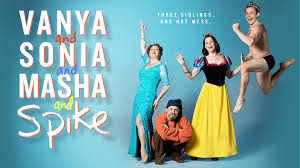 Perhaps this rush to the familiar and popular and NYC-annointed is disheartening, but it’s worth observing that the American Theatre list notes how many productions each title gets, and that after the first couple of slots, we’re usually looking at plays that are getting 7 or 8 productions in a given season, across TCG’s current universe of 474 member companies (404 of which were included in this year’s figures). Since the magazine notes a universe of 1,876 productions, suddenly 27 stagings of a single show doesn’t seem so dominant after all. Granted, TCG drops Shakespeare from their calculations, but even he only counted for 77 productions of all of his plays across this field. So reading between the lines, the American Theatre list suggests there’s very little unanimity about what’s done at TCG member theatres in any given year, a less quantifiable achievement but an important one.
Perhaps this rush to the familiar and popular and NYC-annointed is disheartening, but it’s worth observing that the American Theatre list notes how many productions each title gets, and that after the first couple of slots, we’re usually looking at plays that are getting 7 or 8 productions in a given season, across TCG’s current universe of 474 member companies (404 of which were included in this year’s figures). Since the magazine notes a universe of 1,876 productions, suddenly 27 stagings of a single show doesn’t seem so dominant after all. Granted, TCG drops Shakespeare from their calculations, but even he only counted for 77 productions of all of his plays across this field. So reading between the lines, the American Theatre list suggests there’s very little unanimity about what’s done at TCG member theatres in any given year, a less quantifiable achievement but an important one.
Dramatics
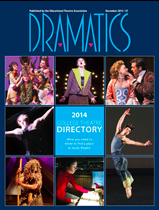 While titles come and go on the American Theatre list, stasis is the best word to describe the lists of most produced high school plays (it’s somewhat less true for musicals). Nine of the plays on the 2014 list were on the 2013 list; 2014 was topped by John Cariani’s Almost, Maine, followed by A Midsummer Night’s Dream and the two titles were in reverse order the prior year. The other duplicated titles were Our Town, 12 Angry Men (Jurors), You Can’t Take It With You, Romeo and Juliet, The Crucible, Harvey and The Importance of Being Earnest.
While titles come and go on the American Theatre list, stasis is the best word to describe the lists of most produced high school plays (it’s somewhat less true for musicals). Nine of the plays on the 2014 list were on the 2013 list; 2014 was topped by John Cariani’s Almost, Maine, followed by A Midsummer Night’s Dream and the two titles were in reverse order the prior year. The other duplicated titles were Our Town, 12 Angry Men (Jurors), You Can’t Take It With You, Romeo and Juliet, The Crucible, Harvey and The Importance of Being Earnest.
Like the American Theatre list, the Dramatics survey doesn’t cover the entirety of high school theatre production; only those schools that are members of the Educational Theatre Association’s International Thespian Society have the opportunity to participate, representing more than 4,000 high schools out of a universe of 28,500 public, private and parochial secondary schools in the country. Unlike the Dramatics list, there are no hard numbers about how many productions each show receives, so one can only judge relative popularity.
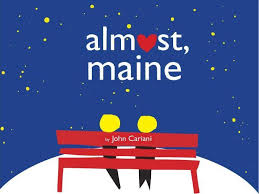 Almost, Maine’s swift ascension to the top rungs of the list is extraordinary, but it’s due in no small part to its construction as a series of thematically linked scenes, originally played by just four actors but easily expandable for casts where actor salaries aren’t an issue. Looking at recent American Theatre lists, they tend to be topped by plays with small casts (Venus in Fur, Red, Good People and The 39 Steps), while the Dramatics list is the reverse, with larger cast plays dominating, in order to be inclusive of more students (though paling next to musicals where casts in school shows might expand to 50 or more).
Almost, Maine’s swift ascension to the top rungs of the list is extraordinary, but it’s due in no small part to its construction as a series of thematically linked scenes, originally played by just four actors but easily expandable for casts where actor salaries aren’t an issue. Looking at recent American Theatre lists, they tend to be topped by plays with small casts (Venus in Fur, Red, Good People and The 39 Steps), while the Dramatics list is the reverse, with larger cast plays dominating, in order to be inclusive of more students (though paling next to musicals where casts in school shows might expand to 50 or more).
The most important trend on the Dramatics list (which has been produced since 1938) is the lack of trends. Though a full assessment of the history of top high school plays would take considerable effort, it’s worth noting that Our Town was on the list not only in 2014 and 2013, but also in 2009, 1999 and 1989; the same is true for You Can’t Take It With You. Other frequently appearing titles are Arsenic and Old Lace, various adaptations of Alice in Wonderland, Harvey, and The Miracle Worker.
No doubt the lack of newer plays with large casts is a significant reason why older classic tend to rule this list; certainly the classic nature of these works and their relative lack of controversial elements play into it as well. But as I watched Sheri Wilner’s play Kingdom City at the La Jolla Playhouse a few weeks ago, in which a drama director is compelled to choose a play from the Dramatics list, I wondered: is the list self-perpetuating? Are there numerous schools that seek what’s mainstream and accepted at other schools, and so do the same plays propagate themselves because administrators see the Dramatics list as having an implied educational seal of approval?
That may well be, and if it’s true, it’s an unfortunate side effect of a quantitative survey. But it’s also worth noting that many of these plays, vintage though they may be, have common themes, chief among them exhortations to march to your own drummer, to matter how out of step you may be to the conventional wisdom. They may be artistic expressions from other eras about the importance of individuality, but in the hands of teachers thinking about more than just placating parents, they are also opportunities to celebrate those among us who may seem different or unique, and for fighting for what you believe in against prevailing sentiment or structures.
* * *
Looking at musicals on the American Theatre list is a challenge, because their list is an aggregate of plays and musicals, and while many regional companies now do a musical or two, it’s much harder for any groundswell to emerge. In the last five years, only three musicals have made it onto the TCG lists, each for one year only: Into The Woods, Spring Awakening and The 25th Annual Putnam County Spelling Bee. That doesn’t mean there’s a dearth of musical production, it simply shows that the work is being done by companies outside of the TCG universe.
 Musicals are of course a staple of high school theatre, but the top ten lists from Dramatics are somewhat more fluid. While staples like Guys and Dolls, Grease, Once Upon a Mattress, You’re A Good Man Charlie Brown and Little Shop of Horrors maintain their presence, newer musicals arrive every year or two, with works like Seussical, Legally Blonde, Spelling Bee, and Thoroughly Modern Millie appearing frequently in recent years. At the peak spot, after a six-year run, Beauty and the Beast was bested this year by Shrek; as with professional companies, when popular new works are released into the market, they quickly rise to the top. How long they’ll stay is anyone’s guess, but I have little doubt that we’ll one day see Aladdin and Wicked settle in for long tenures.
Musicals are of course a staple of high school theatre, but the top ten lists from Dramatics are somewhat more fluid. While staples like Guys and Dolls, Grease, Once Upon a Mattress, You’re A Good Man Charlie Brown and Little Shop of Horrors maintain their presence, newer musicals arrive every year or two, with works like Seussical, Legally Blonde, Spelling Bee, and Thoroughly Modern Millie appearing frequently in recent years. At the peak spot, after a six-year run, Beauty and the Beast was bested this year by Shrek; as with professional companies, when popular new works are released into the market, they quickly rise to the top. How long they’ll stay is anyone’s guess, but I have little doubt that we’ll one day see Aladdin and Wicked settle in for long tenures.
* * *
When I looked at both the American Theatre and Dramatics lists over a span of time, the distinct predictability of each was troubling. Coming out when they do, before most theatrical production for the next theatre season is set, I’d like to see them looked at not as any manner of affirmation, but as a challenge – whether to professional companies or school schedules. I admire and enjoy the plays that are listed here, and nothing herein should be construed as critical of any of these shows; audiences around the country deserve the opportunity to see them. While I do have the benefit of living in New York and seeing most of these popular shows there, I must confess that I am most intrigued by the theatre companies and school groups that might just say to themselves, ‘Let’s not do the shows, or too many of the shows, that appear on these lists. Let’s find something else.’ Those plays may never appear as part of any aggregation, but I suspect the groups’ work will be all the more interesting for it, benefiting both artists and audiences.
August 5th, 2014 § § permalink
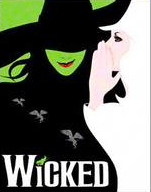 Years from now, when the musical Wicked is eventually made available for school and amateur productions, will some high school administrator declare it inappropriate? After all, among its many plot strands is the story of (spoiler alert) the manipulative Madame Morrible, a school headmistress who schemes against those in Oz who don’t conform precisely to her standards, be they green girl or anthropomorphic animal. It’s a terrible portrait of pedagogy gone wrong and surely doesn’t foster the collaborative, supportive relationships that school leaders must seek with each successive generation of students, as well as with their faculty and staff. From that perspective, it’s seditious.
Years from now, when the musical Wicked is eventually made available for school and amateur productions, will some high school administrator declare it inappropriate? After all, among its many plot strands is the story of (spoiler alert) the manipulative Madame Morrible, a school headmistress who schemes against those in Oz who don’t conform precisely to her standards, be they green girl or anthropomorphic animal. It’s a terrible portrait of pedagogy gone wrong and surely doesn’t foster the collaborative, supportive relationships that school leaders must seek with each successive generation of students, as well as with their faculty and staff. From that perspective, it’s seditious.
I’m reminded of this element of Stephen Schwartz and Winnie Holtzman’s massively popular musical as I consider the challenges to high school theatre that I’ve read about, heard about and involved myself in. Recently, I was engaged to deliver the opening keynote at the Educational Theatre Association’s (EdTA) annual conference for high school teachers. During the question and answer session that followed, one attendee asked the others how many had had shows turned down when they sought approval for them. Roughly a quarter of those in the room raised their hands. In follow-up, they were asked how many had wanted to do certain shows, but didn’t even try because they were sure they couldn’t get approval. Virtually every teacher raised their hand.
Because I don’t believe that these teachers had all been contemplating Oh! Calcutta!, I find myself wondering about their internal decision-making, their self-censorship. Surely they weren’t considering shows which would be blatantly inappropriate in a school setting, so what are those shows that they thought would be good for their students, but which they didn’t even dare raise as a possibility? That might make for an interesting survey in itself.
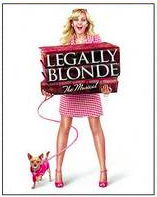 Of course, what’s acceptable to the powers that be at one school, in one town, may be considered problematic in another. Earlier this year in New Hampshire, Sweeney Todd was canceled at Timberlane High School (since reversed) even as another school just a few towns away readied their production of the same show. In 2012, Sonja Hansen lost her position directing shows at Loveland High in Ohio after her production of Legally Blonde was declared inappropriate, yet according to the EdTA’s annual survey, its was the fourth most popular musical in high schools nationally.
Of course, what’s acceptable to the powers that be at one school, in one town, may be considered problematic in another. Earlier this year in New Hampshire, Sweeney Todd was canceled at Timberlane High School (since reversed) even as another school just a few towns away readied their production of the same show. In 2012, Sonja Hansen lost her position directing shows at Loveland High in Ohio after her production of Legally Blonde was declared inappropriate, yet according to the EdTA’s annual survey, its was the fourth most popular musical in high schools nationally.
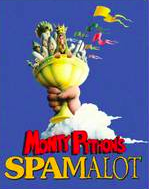 So I’m very interested in the new “Public Performance Policy” that has been put into place at the Junior/Senior High in South Williamsport PA, where a production of Spamalot has been canceled by the principal for reasons that remain unclear. The drama director Dawn Burch asserts that Principal Jesse Smith stated, in an e-mail, that the show’s gay content was a factor. Smith himself has been silent since this story broke, and while the school administration has taken exception to one element of the first report about the issue (since corrected), it has yet to produce the e-mail in question to clear things up. Two “Right To Know” requests have been filed seeking that e-mail and related documents; one of those requests is mine.
So I’m very interested in the new “Public Performance Policy” that has been put into place at the Junior/Senior High in South Williamsport PA, where a production of Spamalot has been canceled by the principal for reasons that remain unclear. The drama director Dawn Burch asserts that Principal Jesse Smith stated, in an e-mail, that the show’s gay content was a factor. Smith himself has been silent since this story broke, and while the school administration has taken exception to one element of the first report about the issue (since corrected), it has yet to produce the e-mail in question to clear things up. Two “Right To Know” requests have been filed seeking that e-mail and related documents; one of those requests is mine.
The timing of the Public Performance Policy, revealed last night at a meeting for the school board, is certainly no coincidence, coming between the initial assertions of anti-gay bias and the release of clarifying materials. As read by the school superintendent, Dr. Mark Stamm, it states:
General Guidelines: Public performances serve as a capstone project for students to showcase their dedication, determination, and talents for their peers and for their families. Performances must be age appropriate for participating students and audiences. Material that is generally considered offensive, suggestive, or demeaning based on race, religion, age, gender, or sexual orientation is not appropriate for school performances.
The first sentence of the policy, describing “showcasing dedication, determination, and talents,” is nicely affirmative – until one notices that there’s no mention of learning or growth, which would seem essential in any school activity, even at South Williamsport, where the drama program is extracurricular, and the drama director an outside contractor, not a teacher. That said, any adult working with young people in a leadership position is a teacher, accredited or not.
However, it’s worth noting that there is a mission statement for the drama program on the school’s website which admirably speaks to deeper value. It reads:
Our mission is to provide students with the opportunity to better themselves through the Arts. Whether it is onstage or backstage, in the production crew or artistic departments, theater helps all people more deeply understand our place in our modern, multicultural, globalized world.
As an aside: finding the drama information on the school website isn’t entirely logical. While there’s a section for clubs, which includes “Yearbook,” “Chemistry,” “Student Council” and “Songwriters and Musicians,” it doesn’t include “Drama.” The Athletic Program has its own site, with its own URL separate from the school district’s. But “Drama” falls under “Departments,” along with “Guidance” and “Nurse,” to which it seems wholly unrelated. How very odd to set it apart in this way.
But returning to the Public Performance Policy, the second sentence isn’t particularly troublesome, so long as it is not used as a justification to infantilize students by feeding them dramatic pabulum. But it’s the third sentence sentence where things turn tricky. While the phrase about not demeaning any parties is admirable (although in their seeming haste, they neglected disability, among other concerns), the language which begins the sentence is limiting, yet vague. “Offensive” and “suggestive” are completely subjective, presumably to be determined according to Justice Stewart’s famous phrase about what constitutes obscenity: “I’ll know it when I see it.” But no two people probably agree about what is offensive, or what is suggestive.
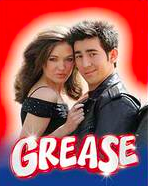 If this policy is meant to be general guidance for teachers (and contractors), shouldn’t it be constructed as such? Wouldn’t it be better to use affirmative language about supporting and advancing society through inclusive representations of race, religion, age, gender, or sexual orientation, instead of saying it simply won’t demean people on those grounds? As it is now, the policy seems more a declaration for the public, and a very general yardstick that teachers might be struck with should they violate its amorphous tenets. Since the school already has a practice of the principal approving the drama productions, it seems that process would presumably address content concerns, based upon reading the text and exploring productions and educational materials from other schools as aids, but in an open dialogue that would negate the need for future Right To Know inquiries. That said, I don’t favor shows going to any manner of public vote, and school boards shouldn’t decide play selection any more than they tell a coach what athletic plays to run.
If this policy is meant to be general guidance for teachers (and contractors), shouldn’t it be constructed as such? Wouldn’t it be better to use affirmative language about supporting and advancing society through inclusive representations of race, religion, age, gender, or sexual orientation, instead of saying it simply won’t demean people on those grounds? As it is now, the policy seems more a declaration for the public, and a very general yardstick that teachers might be struck with should they violate its amorphous tenets. Since the school already has a practice of the principal approving the drama productions, it seems that process would presumably address content concerns, based upon reading the text and exploring productions and educational materials from other schools as aids, but in an open dialogue that would negate the need for future Right To Know inquiries. That said, I don’t favor shows going to any manner of public vote, and school boards shouldn’t decide play selection any more than they tell a coach what athletic plays to run.
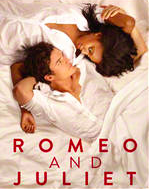 I wonder, however, where the concerns were when the South Williamsport High School did Grease and Once Upon A Mattress? Certainly there are those who would find the plot points about pregnancy out of wedlock in those shows both offensive and suggestive. Grease, frankly, is rife with suggestiveness, at least as I construe it, but I don’t happen to find it offensive; but it was more than enough to cause a school in Missouri, following a 2006 production, to cancel the next show on the schedule: The Crucible. What about Urinetown, produced at the school in 2009? All that talk of toilets and body functions must have offended the sensibilities of some in South Williamsport. The world’s most famous teen suicide story, Romeo and Juliet, was staged, but I wonder whether the school provided educational programs and material to students and the public about the dangers of romanticizing exactly the sort of behavior Shakespeare depicted?
I wonder, however, where the concerns were when the South Williamsport High School did Grease and Once Upon A Mattress? Certainly there are those who would find the plot points about pregnancy out of wedlock in those shows both offensive and suggestive. Grease, frankly, is rife with suggestiveness, at least as I construe it, but I don’t happen to find it offensive; but it was more than enough to cause a school in Missouri, following a 2006 production, to cancel the next show on the schedule: The Crucible. What about Urinetown, produced at the school in 2009? All that talk of toilets and body functions must have offended the sensibilities of some in South Williamsport. The world’s most famous teen suicide story, Romeo and Juliet, was staged, but I wonder whether the school provided educational programs and material to students and the public about the dangers of romanticizing exactly the sort of behavior Shakespeare depicted?
Was everyone sanguine with the following plot points, drawn from two synopses on the website of the licensing house Music Theatre International:
Soon after, attractive and seductive women appear and slowly surround him (“With You”). At first, Pippin is enjoying the romanticism, however, the mood quickly changes and the women bombard him. Pippin is pulled into numerous exotic orgies.
* * *
Audrey has forgotten her sweater, and Orin slaps her around for it…. Orin then pulls out a container of laughing gas, complete with a gas mask and puts it on himself to get high… Seymour feeds Orin’s body parts to the plant.
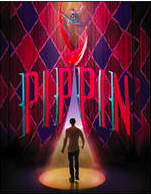 Obviously they passed muster, because Pippin and Little Shop of Horrors were produced at the school before Dawn Burch was hired. With this new policy, could any of the aforementioned shows be done again? Indeed, since there are – sad to say and sad as it is – still people who find homosexuality offensive, would LGBT life in any play or musical be precluded from the South Williamsport stage in deference to their reactionary sensibilities?
Obviously they passed muster, because Pippin and Little Shop of Horrors were produced at the school before Dawn Burch was hired. With this new policy, could any of the aforementioned shows be done again? Indeed, since there are – sad to say and sad as it is – still people who find homosexuality offensive, would LGBT life in any play or musical be precluded from the South Williamsport stage in deference to their reactionary sensibilities?
At the EdTA conference, I repeatedly counseled teachers to cultivate open and honest communication about their work with their department heads, their principals, even their superintendents if possible. Support for sports seems a given at our schools, but support for all of the arts, and it seems theatre in particular, must be developed over time – and started anew each time a key leadership position changes personnel.
When cancelations emerge from behind school doors into the public consciousness, locally and nationally, genuine rifts inside school communities and even entire towns are always possible, with long-lasting and detrimental effects on drama programs. Some schools, such as in Everett MA, do away with drama altogether, deciding a fair and open discussion about dramatic value is simply a nuisance – and therefore the program is as well. Yet are sports shut down when a student is seriously injured, publicly? No. In the case of football, it remains celebrated, even as data on traumatic brain injury mounts, because athletic prowess and competition is honored. It is the thought and expression of theatre that seems to be the dangerous undertaking in so many instances.
Another question I now field with some regularity is whether it’s wise to speak up publicly about these conflicts, bringing them broader attention than they might otherwise receive. My response is that it does carry risk, but if people believe in the power of theatre to not only entertain but educate, in the best interest of the participating students first and foremost, staying silent only allows repression to flourish, and for students to be consigned to the blandest, safest, time-worn work possible. And doesn’t Wicked (among countless works of literature) teach us about the dangers of people working behind the scenes, censoring, excluding, supposedly in the best interest of the community at large?
Having cited Wicked twice, let me finish with a few lyrics that hark back to L. Frank Baum’s Oz stories. I think this pair of couplets, devised by master satirist Tom Lehrer almost 50 years ago, speak simply and directly to slippery words like “offensive” and “suggestive.”
When correctly viewed
Everything is lewd,
I could tell you things about Peter Pan
And the Wizard of Oz, there’s a dirty old man.














